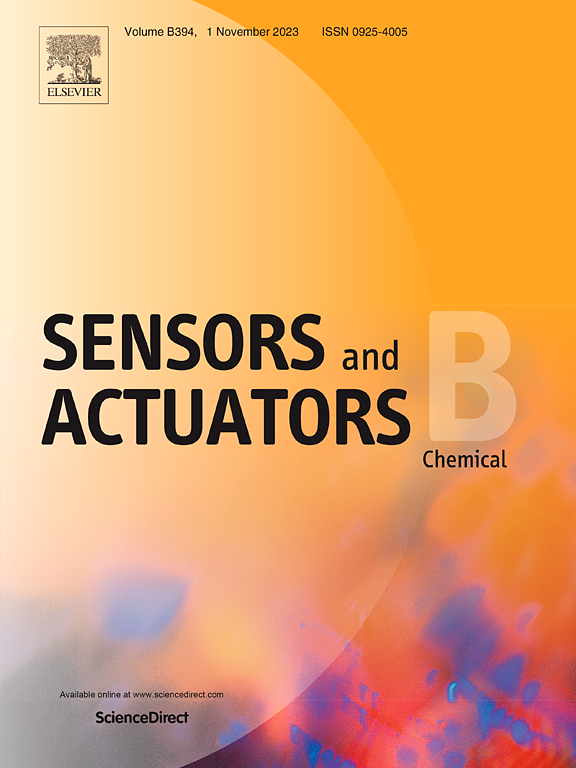A Zero-, Two-, and Three-dimensional Heterostructured MXene@Zn3In2S6@Polyaniline Composite for Highly Sensitive Room Temperature Ammonia Gas Sensing
IF 8
1区 化学
Q1 CHEMISTRY, ANALYTICAL
引用次数: 0
Abstract
Efficient detection of ammonia (NH3) in complex environments is challenging at room temperature. Although polyaniline (PANI) has attracted considerable attention for its applications in room-temperature gas sensing, gas sensors based on PANI materials tend to exhibit low sensitivities, slow response rates, and high detection limits. In this study, MXene microspheres were formed using the template method and two-dimensional (2D) Zn3In2S6 nanosheets were grown using the solvothermal method. Subsequently, the nanosheets are modified by PANI nanoparticles via an in situ chemical oxidation polymerization protocol, and a zero-, two-, and three-dimensional (0D/2D/3D) heterostructure was successfully prepared using MXene@Zn3In2S6@PANI. At room temperature and 45% relative humidity, the sensor response to 100 ppm NH3 reached 484.28%. Notably, the response ability of the sensor was significantly enhanced with an increase in the relative humidity, reaching 1183.24% at a relative humidity of 90% (i.e., 1.54-fold greater than that at a relative humidity of 45%). This excellent moisture resistance ensures that the sensor can cope with complex environments to exhibit an excellent performance. Overall, these results suggest that MXene@Zn3In2S6@PANI sensors have a promising future for use in medical and human health monitoring applications.零,二,三维异质结构MXene@Zn3In2S6@聚苯胺复合材料用于高灵敏度的室温氨气传感
在室温下,复杂环境中氨(NH3)的有效检测具有挑战性。尽管聚苯胺(PANI)在室温气体传感中的应用引起了广泛的关注,但基于PANI材料的气体传感器往往具有灵敏度低、响应速度慢和检测限高的特点。本研究采用模板法制备了MXene微球,并用溶剂热法制备了二维Zn3In2S6纳米片。随后,通过原位化学氧化聚合协议将聚苯胺纳米颗粒修饰纳米片,并使用MXene@Zn3In2S6@聚苯胺成功制备了零、二、三维(0D/2D/3D)异质结构。在室温和45%相对湿度下,传感器对100 ppm NH3的响应达到484.28%。值得注意的是,随着相对湿度的增加,传感器的响应能力显著增强,在相对湿度为90%时,传感器的响应能力达到1183.24%,比相对湿度为45%时提高了1.54倍。这种优异的防潮性能保证了传感器在复杂的环境中也能表现出优异的性能。总的来说,这些结果表明MXene@Zn3In2S6@PANI传感器在医疗和人体健康监测应用中具有很好的前景。
本文章由计算机程序翻译,如有差异,请以英文原文为准。
求助全文
约1分钟内获得全文
求助全文
来源期刊

Sensors and Actuators B: Chemical
工程技术-电化学
CiteScore
14.60
自引率
11.90%
发文量
1776
审稿时长
3.2 months
期刊介绍:
Sensors & Actuators, B: Chemical is an international journal focused on the research and development of chemical transducers. It covers chemical sensors and biosensors, chemical actuators, and analytical microsystems. The journal is interdisciplinary, aiming to publish original works showcasing substantial advancements beyond the current state of the art in these fields, with practical applicability to solving meaningful analytical problems. Review articles are accepted by invitation from an Editor of the journal.
 求助内容:
求助内容: 应助结果提醒方式:
应助结果提醒方式:


